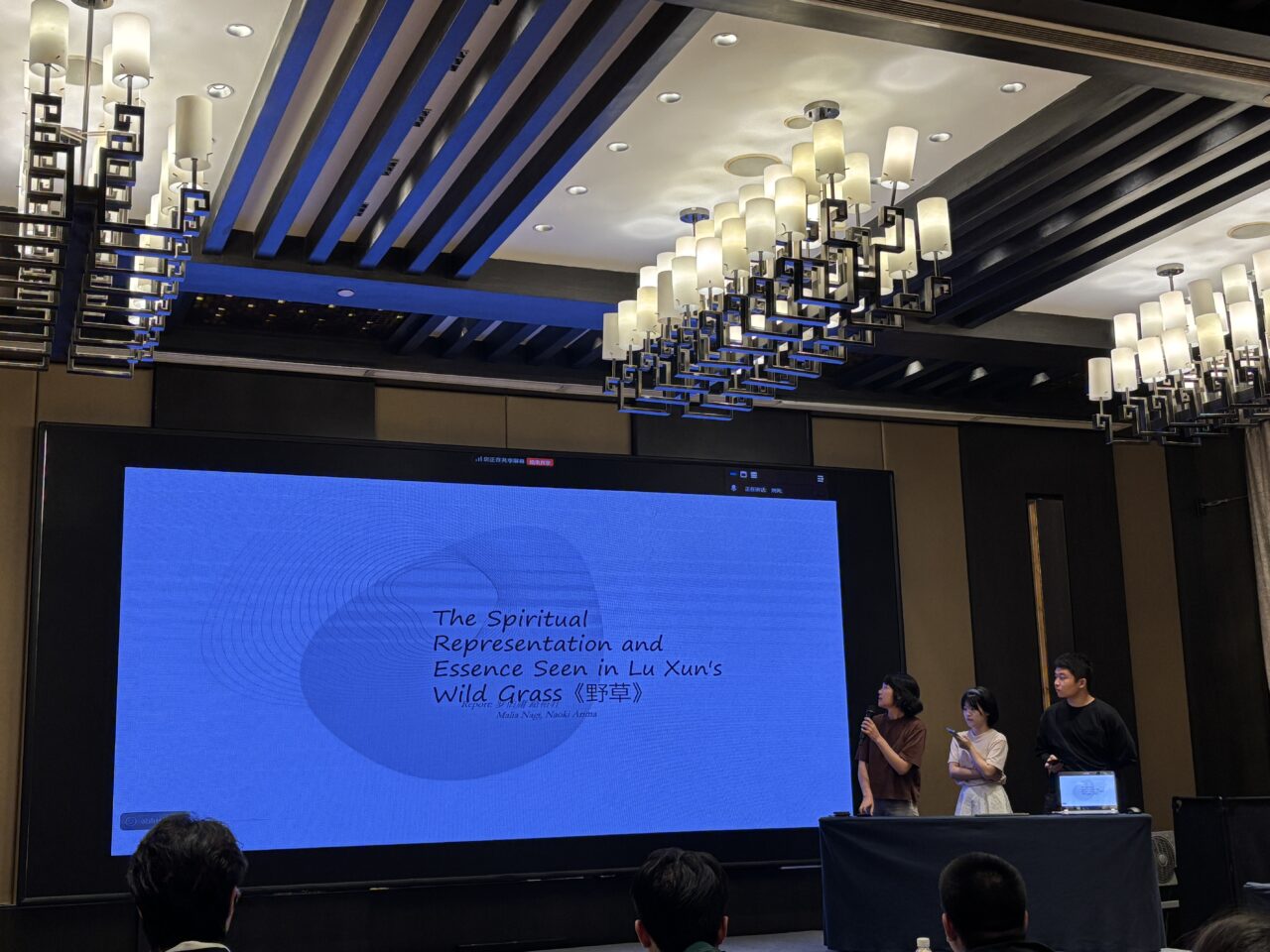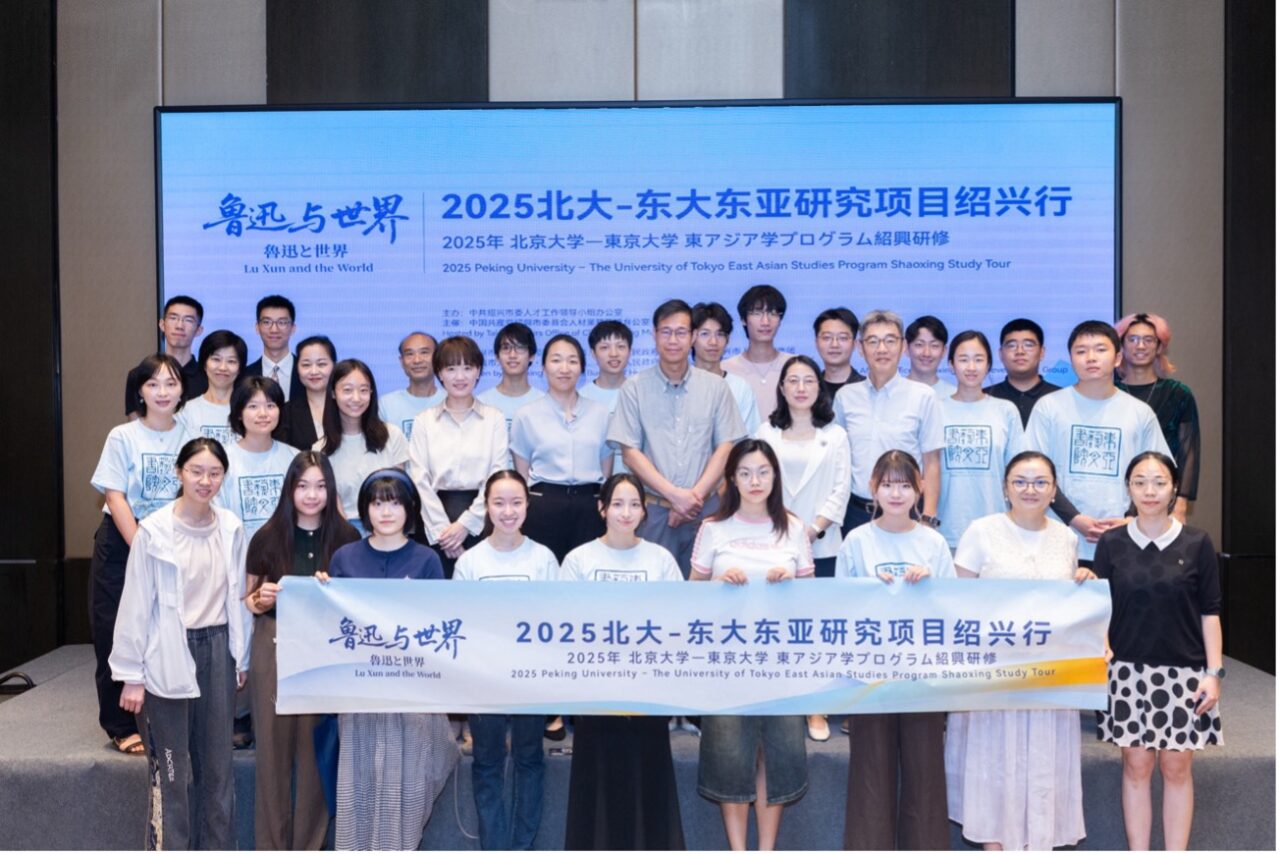Shaoxing is widely recognized as the hometown of many Chinese intellectuals, both ancient and modern ones. One of its notable figures is the Neo-Confucian philosopher Wang Yangming (1472-1529). The last day of the Summer Institute began with a visit to Wang Yangming’s Native Place, where we explored his intellectual contributions to Chinese philosophy, his turbulent political career, and the moral pursuits that characterize his philosophical thought.

The afternoon visit to Lu Town was a remarkable experience. At this theme park inspired by the fictional settings of Lu Xun’s novels, we watched a live performance that vividly brought his literary works to life. This performance transforms Lu Xun’s incisive insights into social realities and his enduring humanistic concerns for suffering people into another art genre. In this sense, it might be seen as an experimental effort to reactivate Lu Xun’s rich intellectual resources, offering a contemporary way to engage with his legacies in today’s China.

In the afternoon, all participants gave their presentations to share their reflections on this year’s Summer Institute.
Group 1 presented on “Lu Xun’s transition from 1st period to 2nd period.” They conducted a skillful textual analysis and provided a nuanced investigation of the social-political circumstances, intellectual milieu, and stylistic changes that mark different phases of Lu Xun’s literary life.

Presentation by Group 1
Group 2 explored “The Relationship between Lu Xun and his hometown.” Their presentation looked at Lu Xun’s ambivalent feelings toward Shaoxing and read “hometown” as a spatial, temporal, and psychological concept in his writing—being between the old and the new, between the past and the not-yet. Through this analytical lens, they further turned to the “dialectic relationships of deconstruction and construction” (in their own words) in Lu Xun’s works, whose critique of the backwardness of society always goes hand in hand with his appreciation of human virtues.

Presentation by Group2
Group 3 presented on “The Spiritual Representation and Essence Seen in Lu Xun’s Wild Grass《野草》.” They tried to propose a reading model based on a “surface-essence” analytical framework. By interweaving contrasting imageries in Lu Xun’s writings and connecting his inner world with literary representations of social realities, their presentation tried to open a holistic horizon for understanding Lu Xun’s works.

Presentation by Group3
Group 4 presented on the topic “Hometown and Lu Xun’s Self-Identity.” They showed a shared concern with Group 2 and proposed a psychological analysis of Lu Xun’s complex emotions toward his hometown. Their presentation also expanded the discussion to contemporary contexts, referring to the young generation’s perceptions of their hometowns in our time with mobility and dislocation.

Presentation by Group4
Group 5 creatively explored the writings and cultural activities of Lu Xun through a future-oriented lens. Their presentation also highlighted Lu Xun as a “cultural bridge” across temporal and spatial dimensions (this reminded me of Lu Xun’s well-known notion of “thing-in-between 中间物”).

Presentation by Group5
Thanks to all participants’ insightful investigations and inspiring discussions, their presentations encourage us to consider the ways Lu Xun’s works continue to evoke imaginations and critical reflections in our own time— an age with uncertainties and precarities at both local and global scales.
Lastly yet importantly, this enriching Summer Institute would not have been possible without the thoughtful preparation and warm hospitality of each person in Shaoxing. It is their generous support and wholehearted dedication that made this trip possible.

Reported by Li Jia (Ph.D. student, The University of Tokyo)








